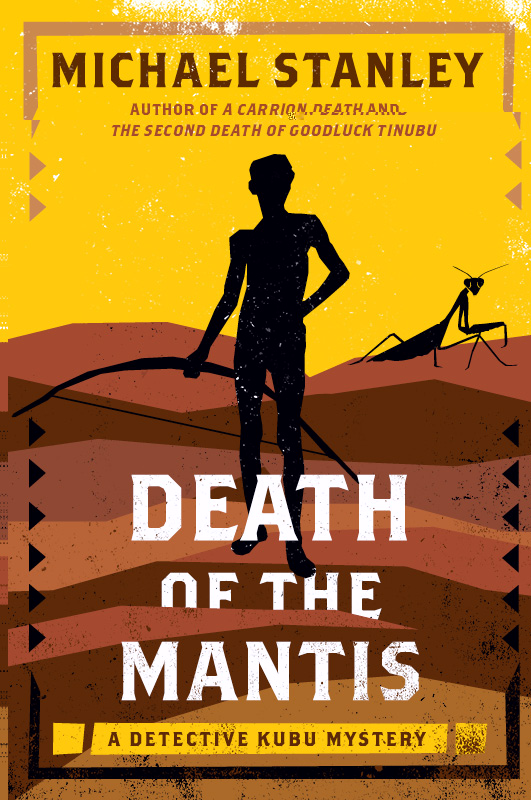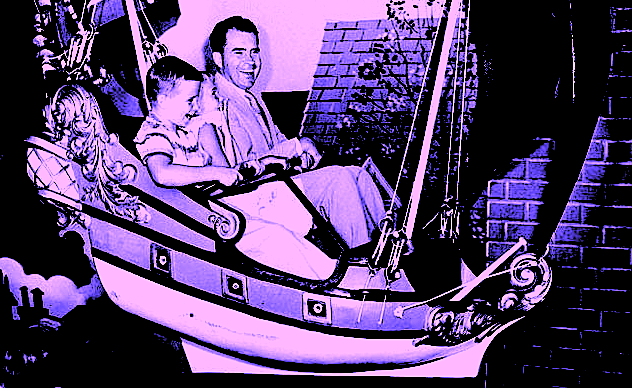Ah, the first long weekend of the warm months, a time perfect for relaxing with family, dawdling on a beach, and/or driving that 50+ miles that news organizations always seem so excited to report U.S. residents are planning on embarking upon this weekend every year. Or so I’m told. I wouldn’t know about it, really: writers tend to spend long weekends working on their books. If their kith and kin are out relaxing, beach-combing, or getting stuck in traffic, how would we know? We’re where we always are whenever we can grab a spare minute: wrestling with story, plot, and characterization.
God bless us all, every one.
In that spirit of laudable endeavor, I’ve planned a two-sided treat of all of you stalwart souls plugging away at your computers this weekend, rather than roasting something hefty on a gas-powered grill. Beginning today, I shall be posting a series of guest blogs by hardworking authors about the ins and outs of constructing a series — or making that always surprisingly tough transition from a first book to a second.
Emphasis on hardworking: in pulling together this series, I made a point of asking authors that had paid their dues, and then some. These are the folks that did everything right for years on end. In these days of ostensible overnight successes and surprise bestsellers by authors who have privately been working feverishly for ten or twenty years on craft, I think it’s vital for aspiring writers to understand that publishing is one of the few artistic endeavors where slow and steady not only wins the race in the long run, but tends to produce better books.
Case in point: today’s guest bloggers, the prolific writing team of Stanley Trollip and Michael Sears, better known to awards committees around the nation as mystery novelist Michael Stanley, author of the acclaimed Detective Kubu series. Those of you who have been hanging around the Author! Author! community for a while may remember his earlier excellent guest posts on book tours, the publication process, and writing with a partner.
This pair is among the most dedicated mystery-writing teams on the planet — and lest you think that’s an exaggeration, let me hasten to add that they live in two different hemispheres, presenting collaboration challenges of which stateside co-authors can only have shuddering nightmares. Yet when I contacted Stan to beg implore ask him to contribute a post to this series on series-writing — and reached him the day before he and his collaborator were slated to complete their fourth novel — he not only instantly said yes, but asked how best to focus the post to assist those of you in the Author! Author! community currently writing series.
That’s what I like to see in an author: generosity, professionalism, and a strong understanding that being an author means being part of a writing community. One never stops paying dues to that community, admittedly, but the rewards are pretty delightful.
Something else I like to see in authors that this team has in spades, doubled and redoubled: a talent for keeping the reader constantly guessing. I’m not the only one to recognize this rare gift, either: their most recent release, Death of the Mantis (also available as an audio book at Audiobookstand), has been racking up accolades like Lincoln logs since its release last year. An entirely representative sample:
Shortlisted for Edgar — Best paperback original
Shortlisted for A Minnesota Book Award — Genre Fiction
Shortlisted for a Barry — Best paperback original
The Strand Magazine 12 best mysteries of 2011.
Library Journal top 10 mysteries for 2011“Impossible to put down, this immensely readable third entry from (Michael Stanley) delivers the goods. Kubu’s painstaking detecting skills make him a sort of Hercule Poirot of the desert.”
Starred Review, Library Journal
“…a must-read for anyone who enjoys clever plotting, terrific writing, and a fascinating glimpse of today’s Africa.”
Charles Todd, New York Times bestselling mystery author
“…the best book yet in one of the best series going… I loved this book.”
Timothy Hallinan, author of The Queen of Patpong and A Nail Through the Heart
“…the best book I’ve read in a very long time…DEATH OF THE MANTIS is a fantastic read. Brilliant!”
Louise Penny, multiple award-winning author of the Inspector Gamache mysteries
Is this where I get to say I told you so? Seriously, in my humble, notoriously-critical-of-English-prose opinion, this is their best book so far. Take a gander at the publisher’s blurb:
Surrounded by a group of Bushmen, a ranger at a game reserve in the Kalahari is discovered at the bottom of a ravine. At first it is assumed that he fell, but it turns out that he was attacked. Although they claim to have chanced upon the injured man, the Bushmen are arrested.
Khumanego, Kubu’s Bushman school friend and now an advocate for the Bushman people, approaches Kubu and asks him to intervene. Khumanego claims the men are innocent and that their arrest is due to racist antagonism from the local police. Kubu investigates the case, resulting in the release of the suspects. But then another man is found murdered in a similar fashion — this time a visitor from neighboring Namibia. The body is discovered by another touring Namibian — an odd coincidence in Kubu’s view — motivating him to follow the clues to Namibia.
Then a third man is murdered and Kubu realizes that the key to the mystery must lie in the depths of the Kalahari itself. And there it is unraveled in a most unpleasant way…
One of the things I like best about Stan and Michael’s work — and in case I haven’t yet made it clear, there are many, many things I like about it — is the impeccable level of detail. These are the kings of show, don’t tell, and that, my friends, takes serious research in a series like this.
I felt some of you twitching at the mention of the r-word, but honestly, you would not believe how often our old pal, Millicent the agency screener, sees stories with mystery storylines (and, let’s face it, many, if not most, fiction storylines contain mysteries of one sort or another) that practically shout, “Hey, Millie, this manuscript needs a fact-checker!” Although experts abound in fiction, it’s actually rare that a protagonist wielding major credentials comes across as genuinely credible.
So says the lady with the Ph.D. Half the doctorate-sporting characters floating around the fictional ether make me cringe with embarrassment and make me want to mail my diploma back to the university. (Then I remember how very becoming my royal purple doctoral Renaissance cap is, and I resist. I worked hard to look that good.)
Speaking of looking good, I am also not the only professional reader that has noticed Stan and Michael’s incredibly nuanced attention to detail. Take a gander at some reviews by those who know stories about Africa far better than I do:
“The information on the Bushmen…is fascinating. Stanley does an exceedingly good job of presenting their plight and culture in an interesting and sympathetic manner. He also conveys the other characters, both black and white, in rich, multi-layered dimensions… a very readable novel that offers fascinating reflections on life in modern Botswana.”
The Canberra Times, November 5, 2011
“…DEATH OF THE MANTIS is a wonderful piece of work, a novel that is quietly perfect in every way…one of those rare books that transcends its rich genre. While there is a mystery at its core, it is also a study of the human condition, of the best and worst of people who do what they do for the best and worst of reasons. And Kubu is one of the best friends you will make between the pages of a book.”
Bookreporter, October 27, 2011
Yes, those are the kinds of plaudits of which every writer dreams, but let me tell you, it did not come without a tremendous amount of persistent, hard work. These are authors that built their writer’s tool kits, just as you are doing now, and my, has it paid off.
Bear that in mind, please, whenever you find your faith in your writing teetering a bit. It can be done. But you’re going to have to pay your dues — and it’s going to be a lot of hard work.
Join me, please, in welcoming a team of authors that help show all of us why this endeavor is so worthwhile. Take it away, Stan and Michael!
When we started writing our first book in 2003, we had no idea that it was going to turn into a series. We actually had no idea that we would even finish the book. This was our first venture into writing fiction, so we were complete novices.
Our initial idea had formed about 15 years earlier when we and four friends were on a flying safari in Botswana. (Stanley is a private pilot) One evening we saw a pack of hyenas attack and kill a wildebeest. By morning there was nothing left except the horns and hooves. Yes, hyenas eat the bones as well as the flesh.
That evening, over a glass or two of wine, we had the idea that should we ever want to get rid of a body, we would leave it out for hyenas. No body, no case!
When we eventually decided to write a novel with that as the premise, our opening scene had a professor (of Ecology) and a game ranger stumbling upon a hyena just before it finished devouring the remains of a human being. The perfect murder was no longer perfect.
You may wonder why there was a professor with the game ranger. Well, we’d been told that we should write what we knew. We were both professors, so we planned to have our professor be our protagonist. However, even in third world countries like Botswana, where our mysteries are set, the police need to be involved. So we sent a Botswana Police detective, David “Kubu” Bengu, from the country’s capital, Gaborone, to the remote tourist camp where the remains of the body lay waiting. By the time Kubu arrived at the camp, he had taken over as the main character.
This was our first lesson — authors aren’t always in charge of the novels they write. Sometimes, the characters take over.
Researching the Okavango Delta in a local dugout, called a mokoro
It took us three years to finish our manuscript. We quite liked it, so decided to try to have it published. After considerable research, it became obvious that we needed an agent to represent us. After some of the usual disappointments, we eventually found an excellent agent in New York. To our complete surprise, she sold the book, titled A CARRION DEATH, to HarperCollins. To our greater surprise, she actually sold a two-book contract.
Yikes! That meant we had to write a second book with the same protagonist, Detective Kubu.
By the way, Kubu means hippopotamus in his native language, Setswana, the common language of Botswana. Hippos are large, normally placid, and the most dangerous mammals in Africa.
So Kubu is a large man. He enjoys eating a great deal and loves good wine, when he can afford it. Surprisingly, he is also happily married. Like hippos, he is slow to anger, but when crossed is very dangerous.
Little did we realize what additional difficulties would surface as we started on the second book. Some became apparent as soon as we started plotting, others sneaked up on us at unexpected times during the writing. Here are some issues we discovered during the course of writing our second book, titled THE SECOND DEATH OF GOODLUCK TINUBU in North America, and A DEADLY TRADE elsewhere.
First, the characters from the first book who carried over to the second would have to be adequately introduced for readers who hadn’t read A CARRION DEATH. But not overly so, otherwise readers who had started with A CARRION DEATH may be bored with the repetition.
This wasn’t easy. For example, in A CARRION DEATH, Kubu recalls a time when he went into the desert with a Bushman friend of his, Khumanego. It was Khumanego who taught Kubu to see what was behind the obvious — that what appeared to be a boring patch of sand was actually a world teeming with interesting flora and fauna.
It was this experience that caused Kubu to want to become a detective. In the second book, we obviously needed to provide new readers with the same background, but it had to be done carefully so as not to put previous Kubu readers off. This is obviously true of all characters.
Establishing a sense of place
Second, even though the action in THE SECOND DEATH OF GOODLUCK TINUBU takes place only a few years after that in A CARRION DEATH, the characters needed to evolve. People who read a series in order want to see characters, particularly the protagonist, grow. They want to see the impact of important events on character and outlook. One thing we did in the second book was to put Kubu’s wife in danger, which allowed us to show a different side of Kubu’s normally placid character.
Third, and perhaps the most difficult, we had to remember all the habits, looks, interactions, etc., of the characters in the first book, so we didn’t contradict ourselves in the second. One of the unexpected revelations from our initial book tour was how well many readers knew A CARRION DEATH. We often felt that they knew more than we did — and they certainly remembered more of the detail than we did. So we realized that any slips would be caught immediately by our eagle-eyed readers.
We couldn’t afford to have Kubu look or behave fundamentally differently in the second book — the habits he had shown in the first book needed to carry over. Similarly he couldn’t interact differently with the people in his life — boss, wife, parents, and colleagues — except because of the ways he had matured. For example, because of the passage of time and because of his successes as a detective, the previously prickly relationship with his boss, Director Mabaku, has mellowed a little. Mabaku continues to be testy, but slivers of softness begin to show.
So, as we wrote THE SECOND DEATH OF GOODLUCK TINUBU, we found ourselves going back to A CARRION DEATH time and time again to ensure that we were getting things right.
A supporting character in Chobe National Park
Then we started the third book, DEATH OF THE MANTIS, and most of the issues discussed above grew in importance. How could we make Kubu, for example, interesting to those people who had already read two books about him? Obviously, he continues to have success as a detective, but we did two things differently.
First, he is now a father — unexpectedly, I might say. This provided us the chance to bring out a previously untapped aspect of his character, namely how to deal with pressures at home, as well as pressures at work. It also allowed us to explore some quirks in his character. Specifically, parts of his traditional upbringing clash with his self-image of being a liberated New Age man.
Second, through his own fault, blinded by assumptions, Kubu finds himself in a situation that nearly ends his life. How does he handle himself as he realizes he has been a fool and, as a consequence, is likely to die?
We also realized that it would have been a very good idea to build a biography of the main characters as we wrote. That would have made it easy to find out such things as how much does he weigh, how old is he, what schools did he go to, what did his parents do before retirement, when did he get married, and so on and so on? It would also help us to keep track of when things happened in our characters’ lives, particularly Kubu’s. When did the various cases take place? What was he doing in his private life at the time? How long has he been married? Has he aged chronologically in our books as time has passed?
As we write, we have to know or have access to this sort of information, otherwise we make mistakes. And one thing I can promise is that there will be numerous readers who will catch the errors.
Actually, in order to make our writing easier, we are seriously considering trying to find someone who would prepare a biography for us, perhaps as part of a university project or paper. We think it would be an interesting project.
On the fly in pursuit of new material at Tsodilo Hills
We have just finished writing the fourth Kubu mystery, tentatively called POTIONS OF DEATH. Again the same issues arise. How does one write a book that will be the fourth in a series for some and the first for others? I think we now have shifted the balance a little towards first-time readers — the book has to be compelling on its own.
We hope, of course, that new readers will like it enough that they will go back and read the earlier books. Readers of our earlier books, fortunately for us, really like Kubu and his family, and look forward to new ones. So far, we have had no pushback that later books are repetitious.
How did we maintain interest for series’ readers in POTIONS OF DEATH? Among other things, we introduced the first female detective into the Botswana Criminal Investigation Department — a woman who is driven to bring to justice witch doctors who sell potions made from body parts of people they have killed. Her obsession is fueled by the fact that one of her childhood friends was murdered for just such a reason.
In real life, this is something that happens in parts of Africa, and prosecutions are few and far between because the clients are usually influential politicians or businessmen and because of the very real fear amongst the police that any witch doctor under suspicion would cast a spell on them.
In some ways, we have concerns about how the whole notion of witch doctors will be received by Western readers. We hope the story is not pooh-poohed. The reality is, of course, that witch doctors are real. And many, if not most, people in Africa believe in them, to the extent that there are instances of people dying purely because they believed a spell had been put on them.
Bushman painting at Tsodilo
The final issue that we keep in mind is not to be formulaic. We think interest in a series will wane if readers feel that our new books are basically the same as earlier ones. Our way around this is to change the backstory for each book. A CARRION DEATH is a mystery built on the back-story of blood diamonds. The background of THE SECOND DEATH OF GOODLUCK TINUBU is the nasty civil war in Rhodesia in the 1970s and the impact it had on neighboring countries. DEATH OF THE MANTIS puts Kubu in the middle of the fight for survival of the traditional Bushman peoples of Botswana, and POTIONS OF DEATH is about witch doctors who kill people.
These different back-stories allow us to move the location of the mysteries to different parts of Botswana, as well as providing totally different motivations and environments for the characters and stories.
We are about to start the fifth Detective Kubu mystery. This time, Kubu will be involved in the unpleasant results of a cultural clash between the local Batswana people and Chinese laborers who have been brought in to build paved roads. This is another issue of contemporary significance. Throughout Africa, the Chinese are bartering construction projects for access to Africa’s resource riches — oil, iron, coal, gold, diamonds, platinum, etc. Almost everywhere you travel in Africa today, you will see Chinese people. Our observation is that they do not integrate well or easily with local communities — a perfect back-story for murder and mayhem.
Tim and Vaughn Pearson with Nosipho Qolo showing off Kubu t-shirts
Our last comment about writing a series concerns the protagonist. He or she has to be able to keep readers’ attention over many books. If, after your first book, your main character hasn’t garnered your readers’ affection, or at least attention, you may find a series difficult to sustain.
Think about Agatha Christie’s Hercules Poirot, Lee Child’s Jack Reacher, Ian Rankin’s Inspector Rebus, Michael Connelly’s Harry Bosch, etc. It is almost always the case that it is these characters that make people continue reading the series, not the plots or stories, although these may also be appealing.
We lucked into Kubu — our readers have a real passion for him and can’t wait to find out about his next exploits, about his family life, and whether any of his diets will ever be successful. Please visit our website at http://www.detectivekubu.com to find out more about Kubu and his colleagues. You can also sign up for a newsletter we send out a few times a year.
By the way, if you are going to write a series, a website is an excellent way to keep faithful readers up to date with what is happening to their favorite character. Browse through our site to see how we provide additional information about ourselves, about upcoming books and events, as well as photos and stories related to our books.
We wish you good luck (which is usually needed) and good writing.
 Michael Stanley is the writing team of Stanley Trollip and Michael Sears
Michael Stanley is the writing team of Stanley Trollip and Michael Sears
Both are retired professors who have worked in academia and business. They were both born in South Africa. Michael is a mathematician, specializing in geological remote sensing. He lives in Johannesburg, South Africa, and is a tournament bridge player. Stanley is an educational psychologist, specializing in the application of computers to teaching and learning, and a pilot. He splits his time between Knysna, South Africa, and Minneapolis in the United States. He is an avid golfer.
Their first novel, A CARRION DEATH, featuring Detective David “Kubu” Bengu, was published in 2008 and received critical acclaim. The Los Angeles Times listed it as one of its top ten crime novels of 2008. It is a nominee for the Minnesota Book Award, Strand Magazine’s Critics Award for Best First Novel, and Mystery Readers International Macavity Award for Best First Novel.






















 Those of you who were hanging around the Author! Author! virtual lounge may remember Stan from last year, when he was kind enough to visit with
Those of you who were hanging around the Author! Author! virtual lounge may remember Stan from last year, when he was kind enough to visit with  How can a man die twice?
How can a man die twice?